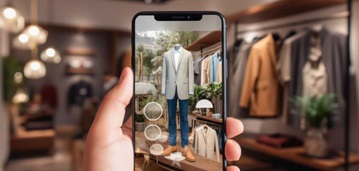You've Uncovered the Weak Spots in your Omnichannel Approach: Now What?
Part of the Driving Digital Agility content series: Insights and strategies to pivot to digital business, navigate new work environments, and manage changing customer expectations.

The COVD-19 crisis fundamentally changed the ways companies interact with their customers. Over a very short period of time, the traditional channels organizations used to communicate and transact with customers before the pandemic evaporated or changed dramatically.
Any channels that relied on direct face-to-face interactions became at least temporarily unavailable. From in-store shopping to in-home services or in-person appointments, social distancing has put a never-before-seen strain on large parts of organizations’ omnichannel strategies.
Aside from direct person-to-person interaction with customers, the global pandemic also applied tension to other channels in surprising ways. Social distancing and the resulting shift to remote work has affected customer interactions that weren’t conducted face to face. Many customer service call centers, for example, that were previously operating on either outsourced models or simply ill-equipped for remote work, weren’t able to handle the transition. This resulted in long on-hold times or the complete inability to reach a live person at all, forcing them to immediately scale up online support functions.
In short, even the most advanced players are finding it hard to adjust and meet new demands, whether in the form of increased online traffic, new fulfillment and delivery expectations, or always-on availability for customers from remote locations.
Insights From Omnichannel Stress
Omnichannel approaches rely on a central 360-degree view of the customer, providing consistency in messaging and shopping experience no matter the type of customer touchpoint. The success in omnichannel approaches, therefore, lies in using connectivity to tie systems, customer data, and digital experiences together and finding new ways to interact with customers or provide services when a given channel is ineffective.
The pandemic has brought into stark relief any weak spots in omni-channel approaches, and has forced companies of all sizes to evaluate how they interact with their customers at every touchpoint. In addition to customer interactions, the new environment has necessitated physical process changes in fulfillment and delivery that can only be scaled through the use of technology.
Agile, connected organizations have been and will continue to be better suited to adjust to this new normal, while less digitally transformed companies need to undertake greater efforts to try to connect the dots. Overall, we expect to see a greater need for more reliance on technology, connected systems and experiences, e-commerce, and integrated online and offline experiences.
Closing the Gap with Technology
In looking at your own omni-channel strategy in the context of our current environment, you’ve most likely uncovered your own set of weak points. Now is the time to fix them with a combination of new customer experience approaches and back-end technology infrastructure changes.
Keeping a Personal Touch Despite Fewer In-Person Interactions
The most pervasive effect of the lingering pandemic response is the move away from in-person interactions. Consumer comfort around in-person interactions will likely remain low for the foreseeable future, as concerns around a second wave of the outbreak remain top of mind. There are a number of ways, though, to replace, supplement, or augment human interactions:
- Flexible and nimble e-commerce capabilities let businesses scale online sales when needed to adapt to drops in foot traffic. Enabling customers to buy items online and pick them up in store or curbside allows customers to receive products faster than if they were shipped, but saves them the trouble of spending time in stores or restaurants and takes the check-out process from a hand-to-hand transaction to a digital one. Additional capacity in mobile POS and connected order picking and inventory tracing technologies will be needed to execute such processes at scale.
- We’ve seen video conferencing and video calls enable a massive uptick in telehealth appointments in healthcare, but it’s applicable in other industries too. Service providers and technicians like tradespeople can conduct virtual home visits, diagnosing problems and offering advice from anywhere. Retail organizations can provide digital concierge services via video, and even enable augmented reality solutions to allow customers to visualize products on their home or clothes on their body. Remote and location-based video capabilities would require upgrades in bandwidth and connectivity.
- Sales teams that depend on in-person meetings or phone calls to office lines that are likely unstaffed at the moment have turned to social media, leveraging LinkedIn networks and increased social media traffic as potential customers are stuck at home and checking social feeds more often.
- Voice and unified communications that follow you anywhere ensure that even when face-to-face interactions aren’t possible, you’re always within customer reach.
Ensuring a Cohesive Experience
A key tenet of omnichannel strategy is the importance of a unified customer experience, no matter the medium, channel, or venue. Wherever you interact with a customer, they should feel like you know them, you empathize with them, and you’re invested in helping them. The key to that kind of cross-channel continuity comes in technology:
- Unified, central customer profiles allow any department and any location instant access to known customer data and transaction histories. Giving sales, customer support, and marketing teams the same set of customer data enables everyone in the organization to understand customer preferences and histories and respond accordingly on any channel. Connected systems and touchpoints and common databases are prerequisites to having a unified view of the customer.
- Cloud connections are needed to seamlessly connect disparate applications, systems, and locations, ensuring consistency among channels. It’s not only customer data that needs to be immediately available across the organization but also inventory availability levels and newly critical capability to assess shipping and delivery timelines.
- Real-time analytics can analyze customer behavior, gauge sentiment, and orchestrate experiences across all channels, ensuring that automated interactions are contextually relevant and appropriate in the moment.
Underpinning Omnichannel Strategy With the Right Foundation
From in-store connectivity, smart POS systems, connected warehouse and distribution facilities, remote workforces, and linked customer relationship management platforms and service centers, the need for business-wide connectivity to ensure consistent customer experience across channels has never been greater.
Omnichannel strategies require interconnection between both systems and people. As you tap into new channels and optimize your use of existing ones, having connectivity between channels allows you to scale and share information as needed. Having the network and communications capabilities, including robust voice solutions, to keep employees and teams in constant contact with each other, with customers, and with systems and solutions ensures a 360-degree approach.
As we continue to pivot toward recovery, the ways in which we interact with customers will certainly continue to evolve, but the experience they have with your organization doesn’t have to. Establishing the right foundation for omni-channel approaches involves a number of factors, but it starts with an agile, flexible network that gives you centralized control across all of your locations and lets you view your entire architecture on a single pane of glass.
For more information on how businesses can use technology to navigate new work environments and expectations, explore the rest of our “Driving Digital Agility” blog series.
Get strategies on how to go digital and meet changing customer expectations in a new environment.
Locked Content
Click on the button below to get access
Unlock NowOr sign in to access all content on Comcast Business Community
Learn how Comcast Business can help
keep you ready for what's next.










